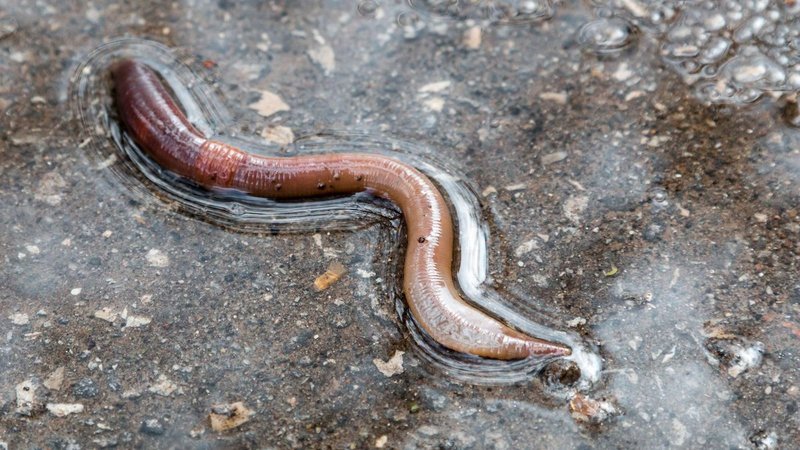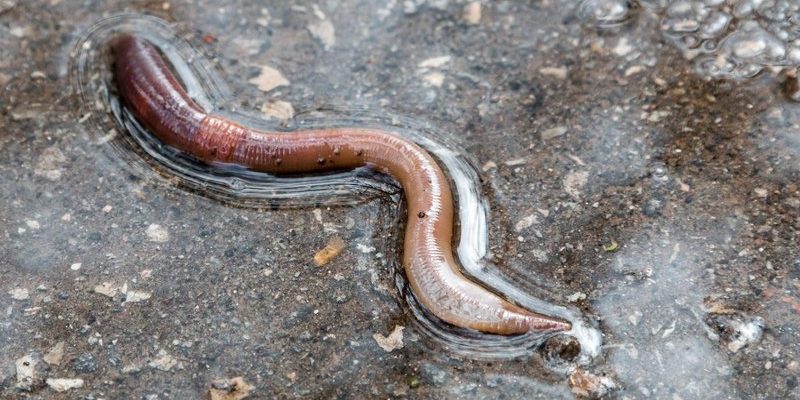
Earthworms are vital to our ecosystem, playing a critical role in soil health. When they come to the surface, it’s not just a random act; it’s a response to their environment. Understanding why earthworms surface during heavy rain can offer insights into both their unique biology and the health of our soil. So, let’s unravel this mystery and see what’s going on beneath our feet!
The Earthworm’s World
Before we go any further, let’s take a moment to appreciate where earthworms live. These little guys thrive in the soil, burrowing through it while munching on organic matter, which helps enrich it. But here’s the thing: earthworms breathe through their skin, meaning they need moisture to survive. Their cozy underground world is usually damp, but heavy rain can change everything.
When rain pours down substantially, it saturates the soil, filling it with water. For earthworms, this creates an environment that’s great for their breathing needs. However, if the soil gets too flooded, they can find themselves in a precarious spot. You might think of it like living in a nice, warm blanket until someone douses it with water—eventually, you’ll need to escape!
Why Do They Come Up?
So, why do earthworms make a break for the surface during these heavy rains? One of the primary reasons is oxygen. When the soil gets waterlogged, the oxygen levels drop significantly. Earthworms need air to breathe, and if they can’t get enough oxygen underground, they have no choice but to venture out into the open.
When they come up, they’re trying to find a safer spot where they can continue to breathe. It’s a little like when you feel like you’re running out of breath underwater—your instinct is to swim back to the surface! This surface escape helps ensure that they can stay alive and continue their important role in soil health.
Protection from Predators
You might be surprised to hear that coming to the surface has its benefits, even if it seems risky. Earthworms are often prey for birds and other predators. But during heavy rains, many predators might take a break from hunting due to the wet conditions. This temporary pause in predation provides a window of opportunity for the worms to move around and find new, suitable habitats.
It’s almost like Mother Nature gives them a little grace period during rainy weather. By capitalizing on this moment, earthworms can expand their territory and search for fresh food sources. It’s all about survival and adapting to changing conditions!
Soil Health and Ecosystem Balance
Bringing earthworms into the conversation isn’t just for fun—it highlights their significant role in soil health and our ecosystem at large. As earthworms surface and move through the soil, they help aerate it, allowing water and nutrients to reach plant roots more effectively. This is crucial for maintaining healthy gardens, farms, and natural landscapes.
When you see earthworms after a rainstorm, think of them as nature’s little helpers. They’re not just looking for air; they’re actively contributing to the soil’s structure and fertility. Plus, they break down organic materials, making nutrients more available to plants. It’s a beautiful cycle of life that benefits everyone involved!
Understanding Their Behavior
If you’re looking to understand this phenomenon more deeply, it’s essential to consider the seasonal factors at play. Earthworms are cold-blooded creatures, which means they rely on external temperatures to regulate their body heat. During colder months, they go deeper into the ground to avoid freezing conditions. However, heavy rains in warmer months can bring them back up as they search for cooler spots.
Additionally, other weather-related factors could influence their behavior. For instance, after a period of drought, the sudden influx of moisture might prompt more earthworms to surface than usual. Think of it this way: if you’ve been stuck inside during a heatwave, a sudden rain might seem like the perfect excuse to step outside and enjoy the fresh air!
Common Misconceptions
There are quite a few myths surrounding earthworms and their surface behavior during rains. One common misconception is that they come out just to enjoy the rain. While they may not dislike it, they’re not exactly out there throwing a party! Instead, they’re responding to their survival instincts.
Another myth is that earthworms will drown if they stay underground during heavy rain. While they can’t survive in completely flooded conditions, they have adapted ways to cope with temporary inundation. They can survive being submerged for short periods, relying on their moist skin for respiration until conditions improve.
What You Can Do to Help Earthworms
If you’re as fascinated by earthworms as I am, you might be wondering how you can support these essential creatures. Here are a few easy steps you can take:
- Keep your garden healthy: Use organic materials and avoid harsh chemicals that can harm earthworm populations.
- Practice composting: Compost is a great way to provide earthworms with a nutritious environment. They love decomposing leaves and food scraps!
- Avoid overwatering: Giving your garden just the right amount of water helps maintain a balanced environment for earthworms.
- Create habitats: Leave some areas of your yard undisturbed, allowing earthworms to flourish naturally.
By taking these simple steps, you’re not just benefiting earthworms; you’re also helping promote a healthier ecosystem overall.
Final Thoughts
Understanding why earthworms surface during heavy rain offers a glimpse into the remarkable world of these tiny creatures. Their behavior is driven by a need for oxygen and a response to their environment, all while playing a crucial role in maintaining soil health. So, next time you see them wriggling around your yard, remember, they’re not just escaping the rain—they’re navigating the delicate balance of nature. By taking care of our earthworm friends, we contribute to a thriving ecosystem that benefits us all.

